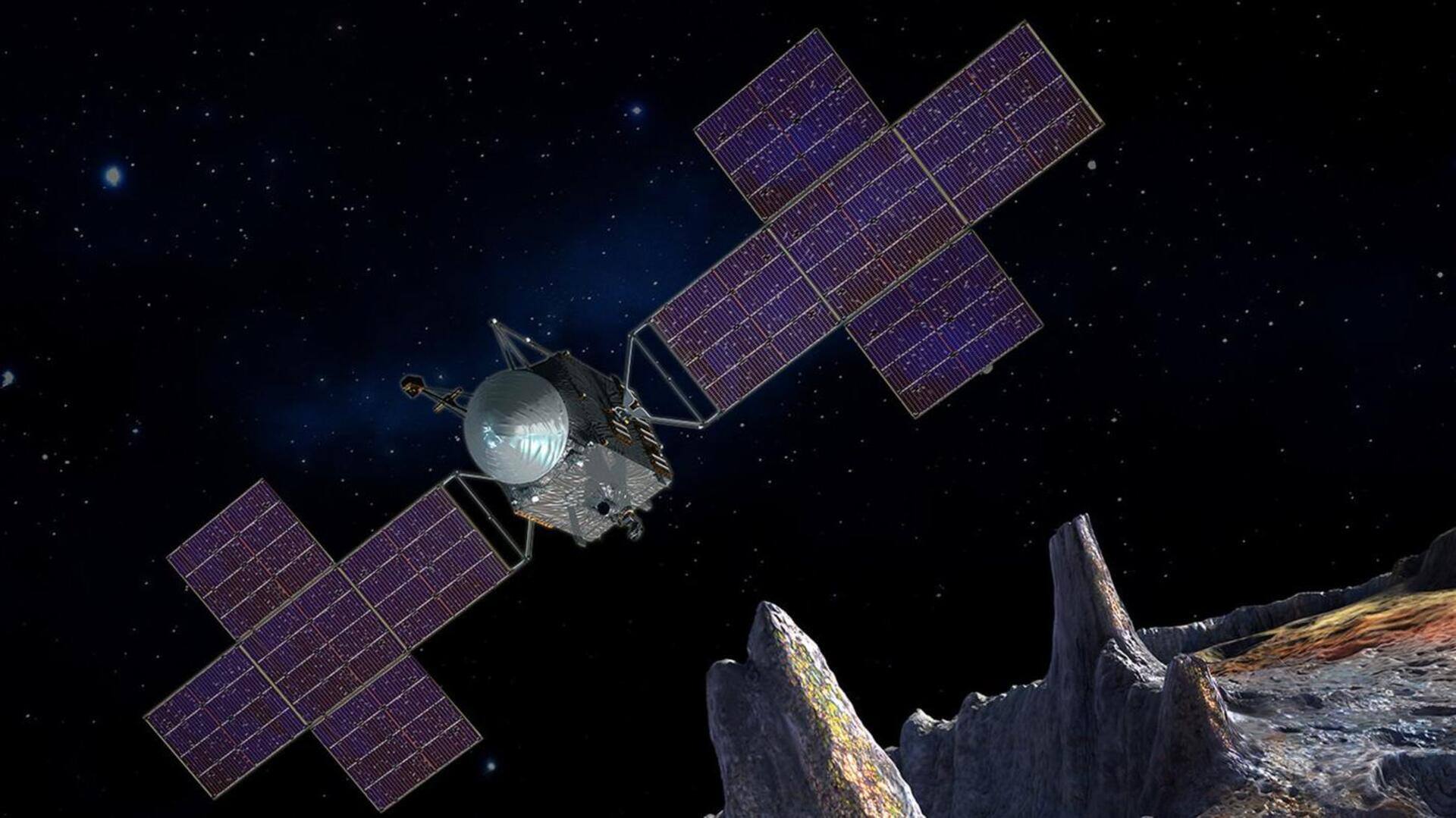
Exploring 'new type of world': Everything about NASA's Psyche mission
What's the story
NASA is looking forward to launching its Psyche spacecraft on October 5. It will take off aboard a SpaceX Falcon Heavy rocket from the Kennedy Space Center in Florida. The mission is set to explore a unique metal-rich asteroid, also called Psyche, nestled in the main asteroid belt between Mars and Jupiter. For the first time, the mission will explore a "new type of world" that's made of metal and not of rock and ice, notes NASA.
Details
What's unique about the Psyche asteroid
The 280-km-wide metallic Psyche asteroid is thought to be the exposed nickel-iron core of an early planet, with its outer layers stripped away by impacts. Such exposed cores are believed to be one of the building blocks of our solar system. Scientists thereby think that this unique celestial object could shed light on how Earth came into existence. Post-launch, the mission will have a lengthy voyage to reach its destination, sometime in 2029.
Insights
A laser-based communication experiments will be on board
Besides its primary mission, the Psyche spacecraft will also host NASA's Deep Space Optical Communications (DSOC) experiment. This laser communications system will test high-bandwidth optical communications back to Earth in the first two years of its journey. By using light instead of radio, more data transmissions will be possible in a given amount of time, notes NASA. The experiment could revolutionize data communication across vast distances in space and enhance our ability to explore distant reaches of the solar system.
What Next?
The mission has been delayed due to software issues
Initially scheduled for launch last year, the mission faced delays after issues were found with the spacecraft's flight software. The launch window lasts until October 25, but a potential government shutdown on October 1 could impact the schedule. The upcoming launch will be the first interplanetary mission for Falcon Heavy and its eighth liftoff overall. Psyche mission could signify a major leap forward in our understanding of the early solar system and pave the way for future asteroid exploration endeavors.